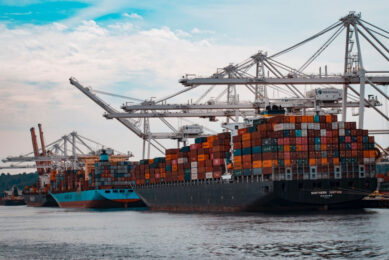Rabobank: pork trade competition increasing

Global pork consumption is poised for growth, and in its recently-published report on global pork trade, Rabobank notes that while competition among major pork exporters has intensified, the competitive landscape will continue to shift.
According to Rabobank’s report, the advantage will likely be in the hands of low-cost producers, such as Brazil and the US. Europe’s position, meanwhile, is expected to weaken, primarily due to an increase in market and regulatory requirements concerning animal welfare and sustainability.
Growing consumption supports trade
Eva Gocsik, senior analyst (animal protein) at Rabobank, noted that global pork consumption is expected to grow at a projected 0.7% compound annual growth rate from 2022 to 2030. Next year, in 2024, this is anticipated as a result of easing inflationary pressures and further recovery from African Swine Fever in Southeast Asia and Asia. In the longer term, population growth and economic development will further drive consumption growth, which will offset the ongoing decline in consumption in Europe.
Brazil’s production cost advantage
Foreign exchange rates as well as shipping, labour and pig production costs are major factors affecting the competitiveness of global pork exporters. Gocsik notes that Brazil is emerging as a remarkable player, and in 2022 captured 24% of Chinese pork imports, cementing its position as China’s second-largest supplier. Brazil continues to maintain its production cost advantage over European exporters.
North America remains key player
The US and Canada continue to hold their status as low-cost pork exporters thanks to affordable feed and ongoing access to key markets. The value of US and Canadian pork may see an increase due to further consolidation and sustainability initiatives . Regardless, US and Canadian pork and variety meat exports will remain central to the global pork trade.
Production costs rising in the EU
In the EU, increasing sustainability and animal welfare standards require investments from producers. And while European pork exports remain significant, they are anticipated to shrink as production costs are anticipated to rise further.
Disease pressure looms
“African swine fever continues to impact importing countries in Asia directly and European exporters indirectly through trade restrictions, reshaping global trade patterns,” said Gocsik. Meanwhile, some regions are testing vaccines and gene editing, which could potentially offer a competitive advantage to some producers.
 Beheer
Beheer








 WP Admin
WP Admin  Bewerk bericht
Bewerk bericht